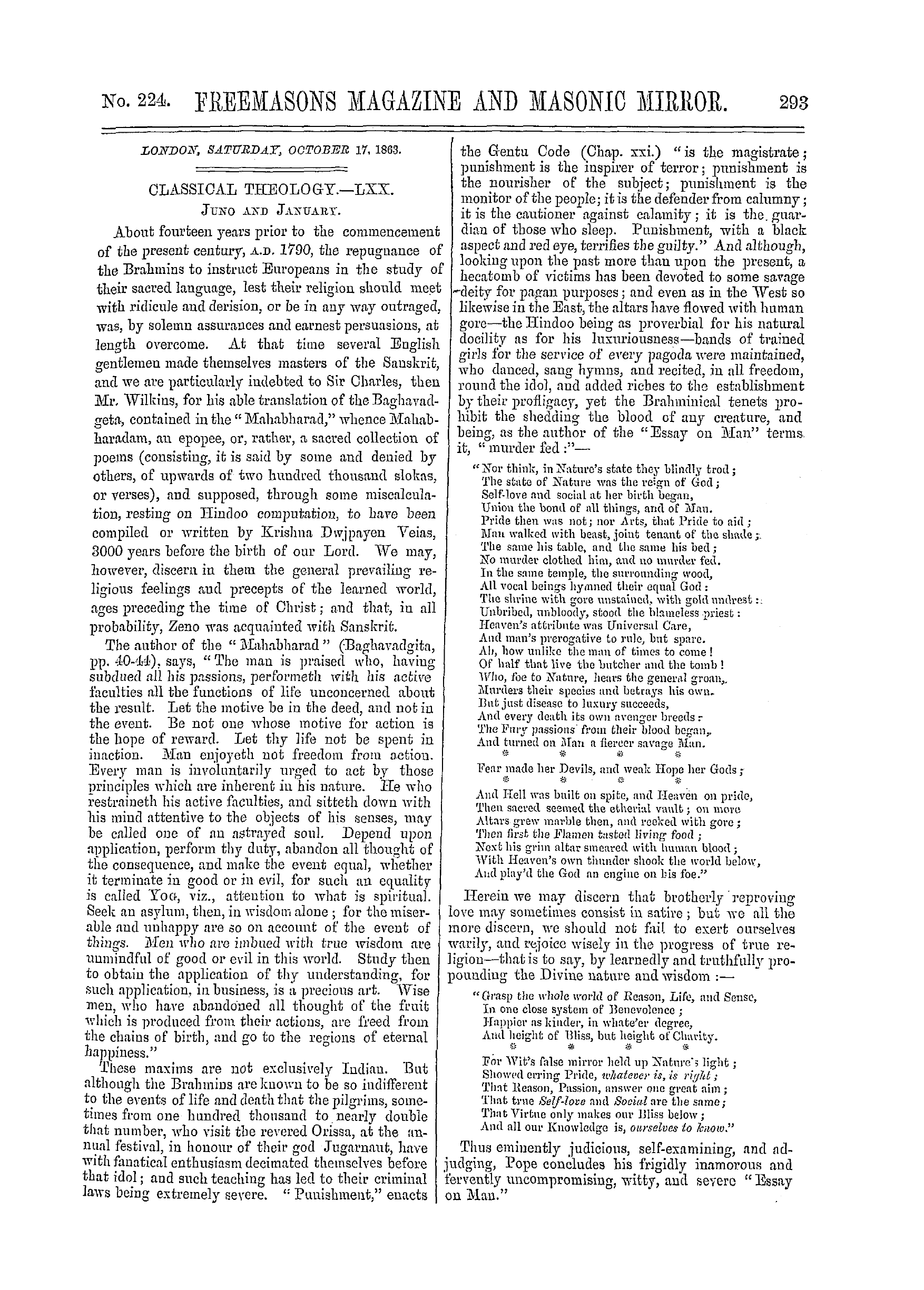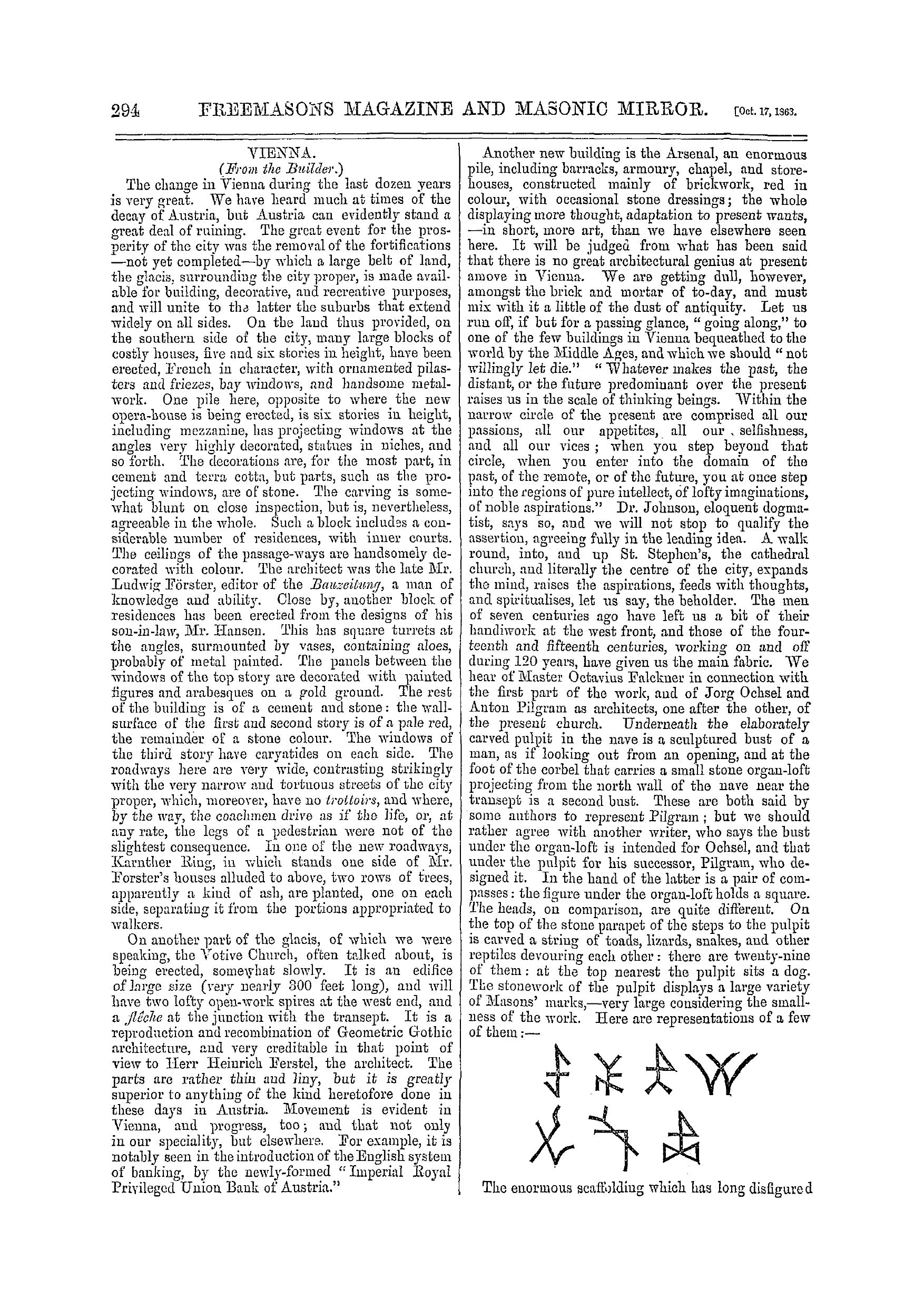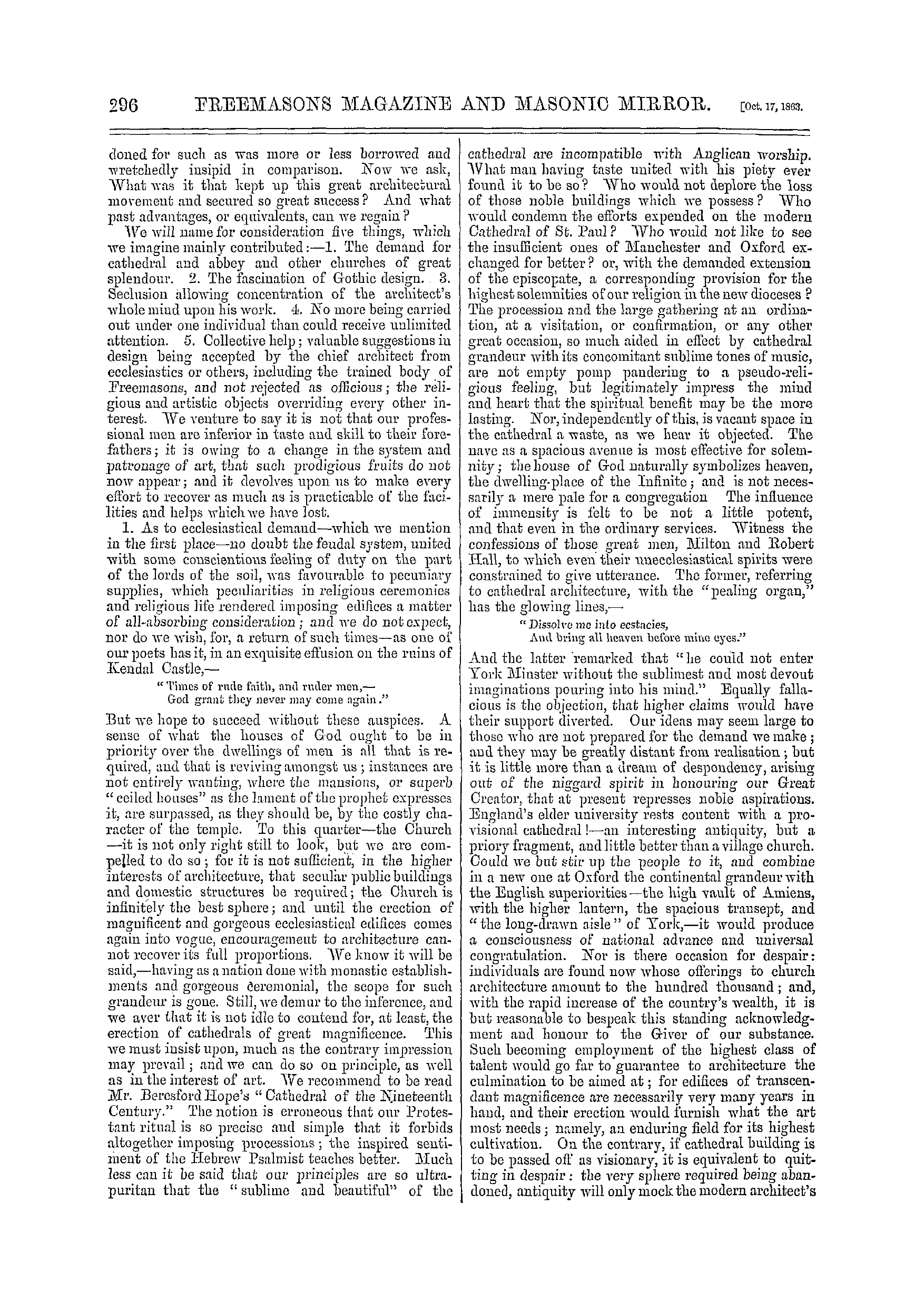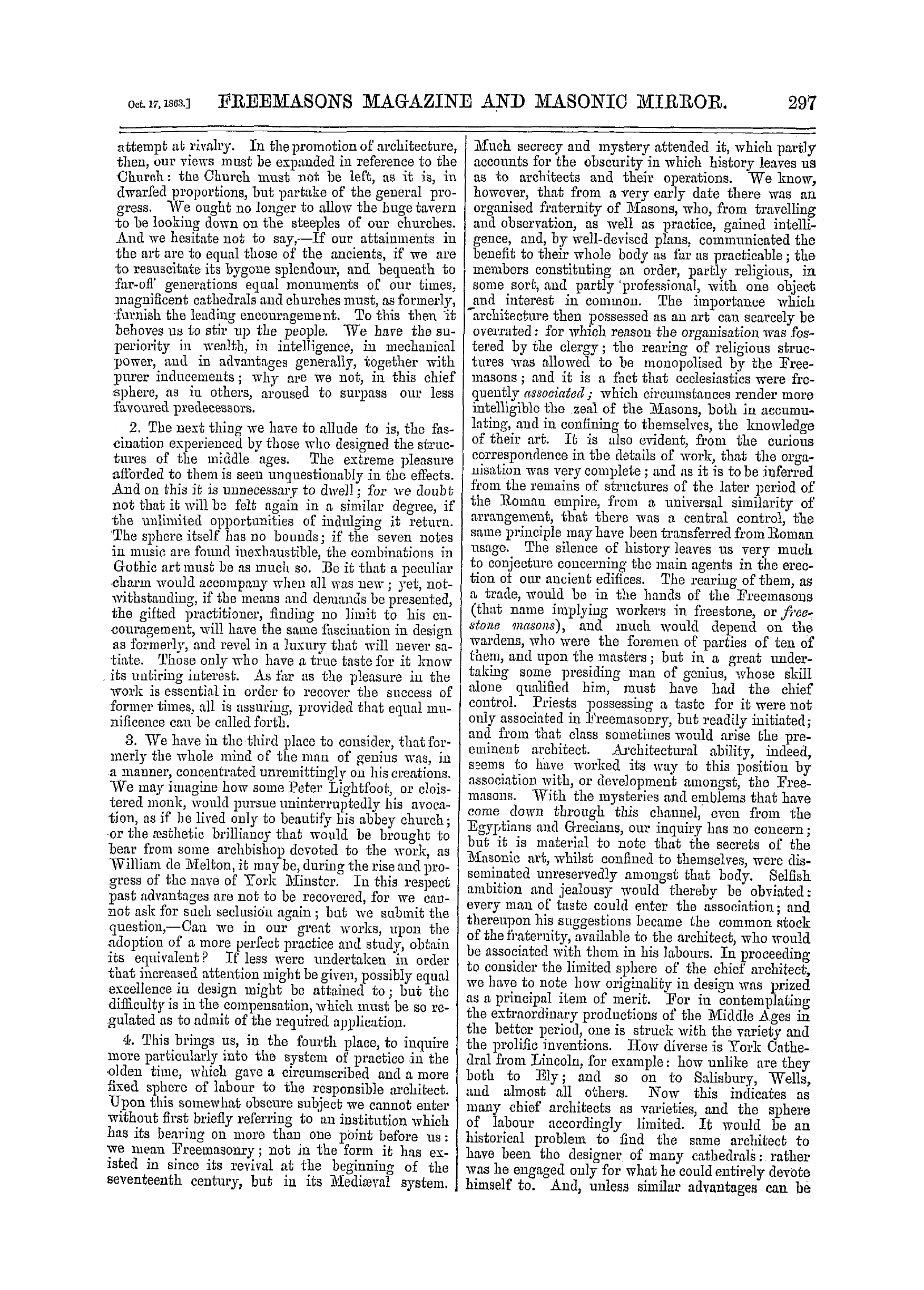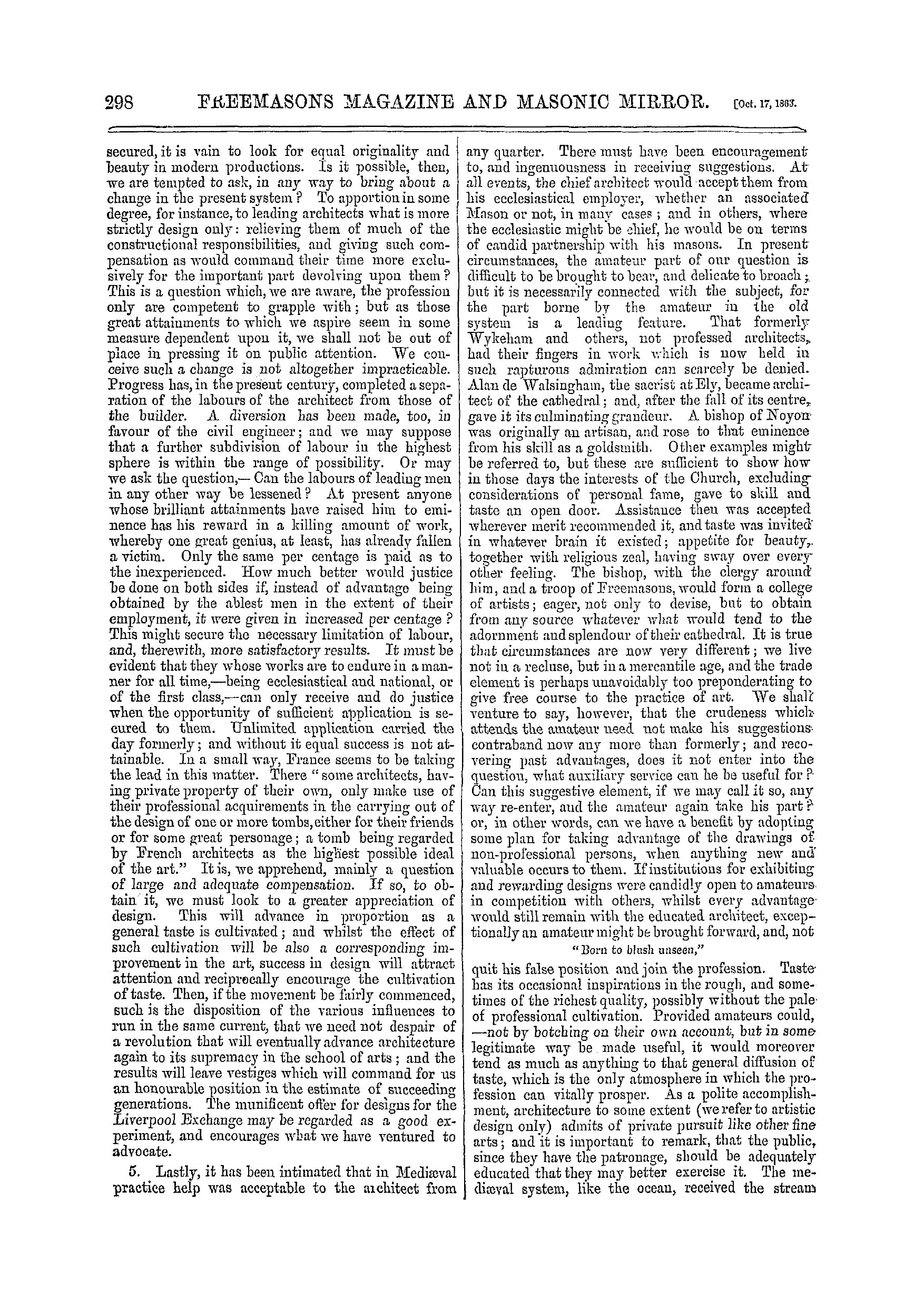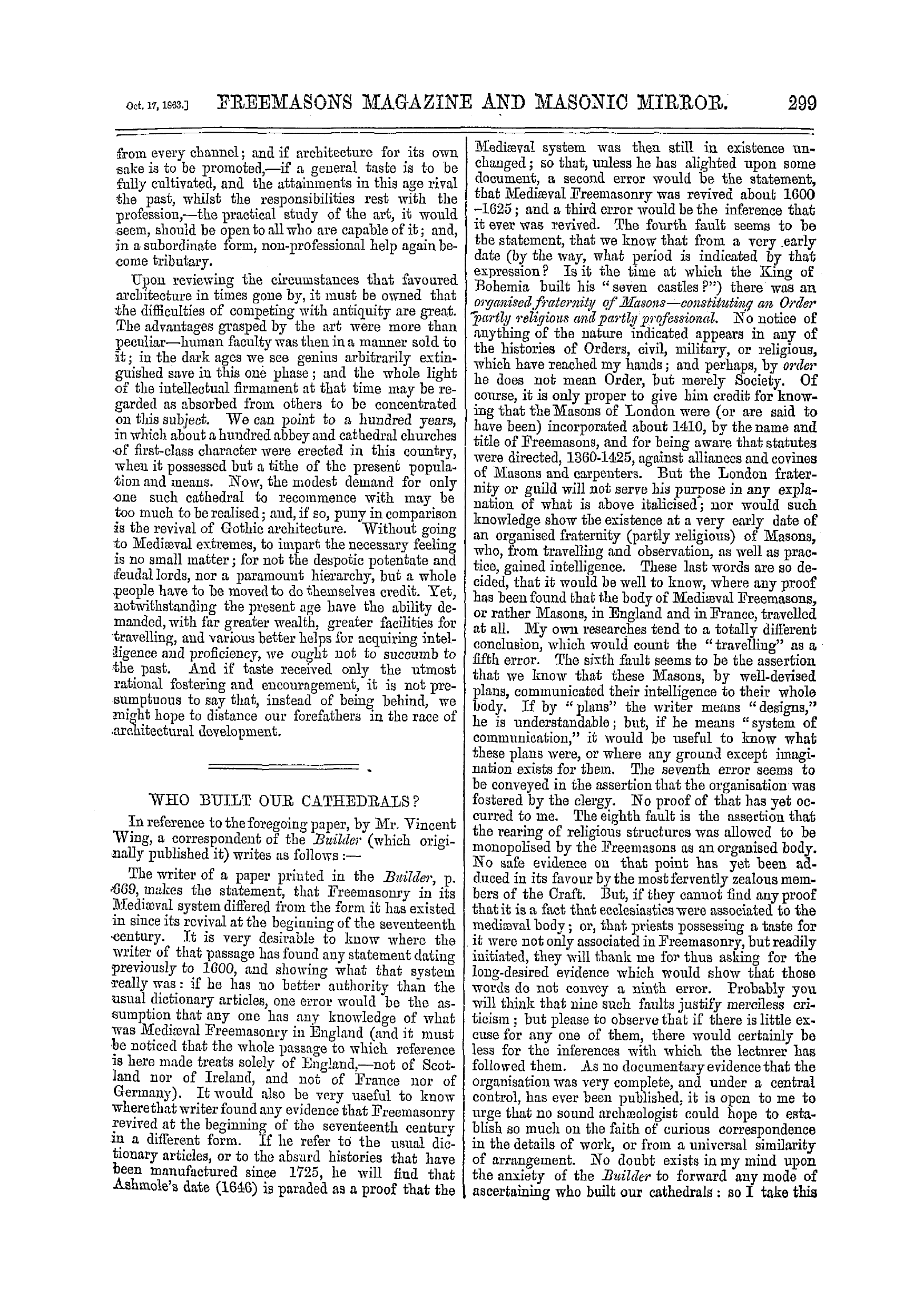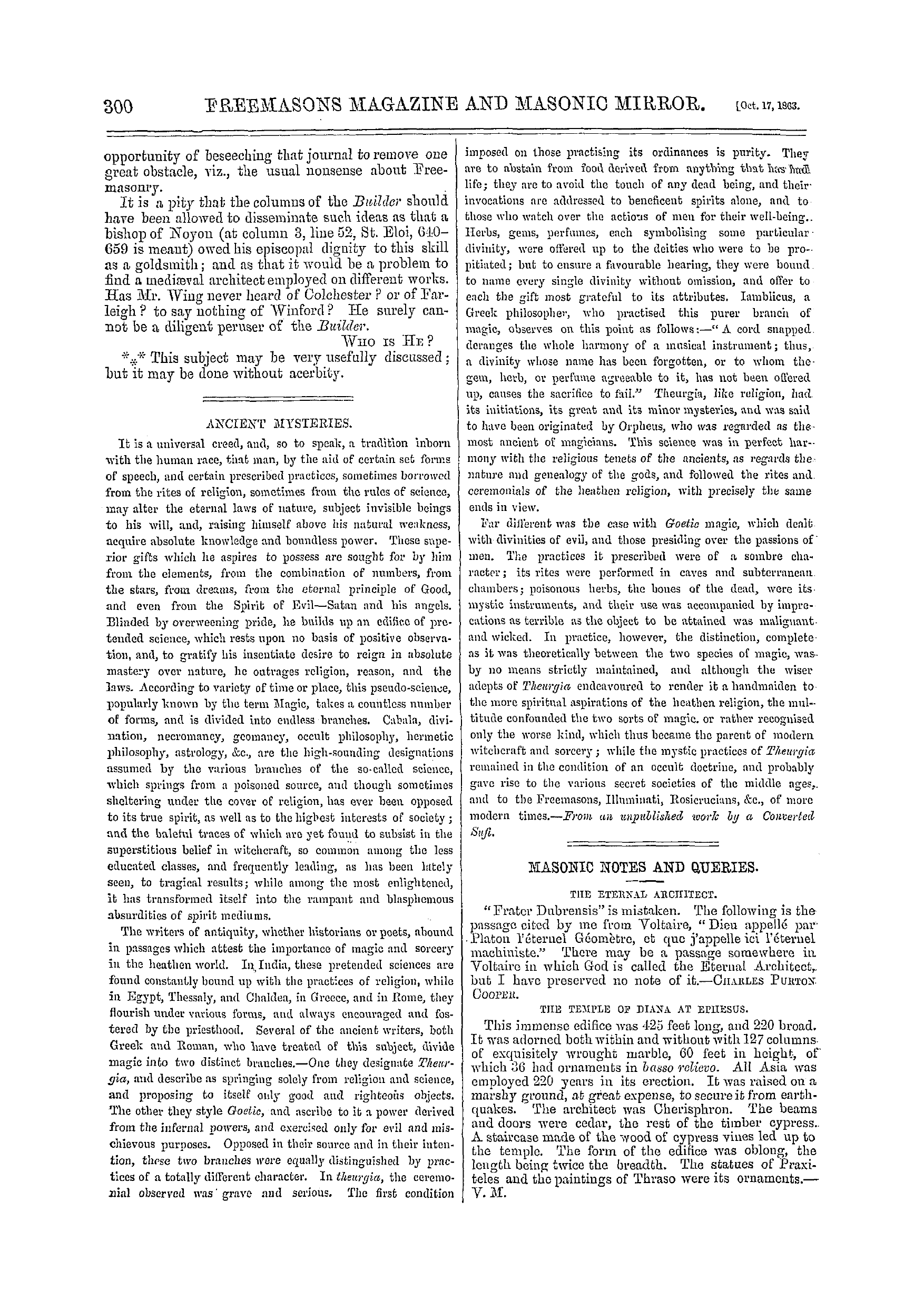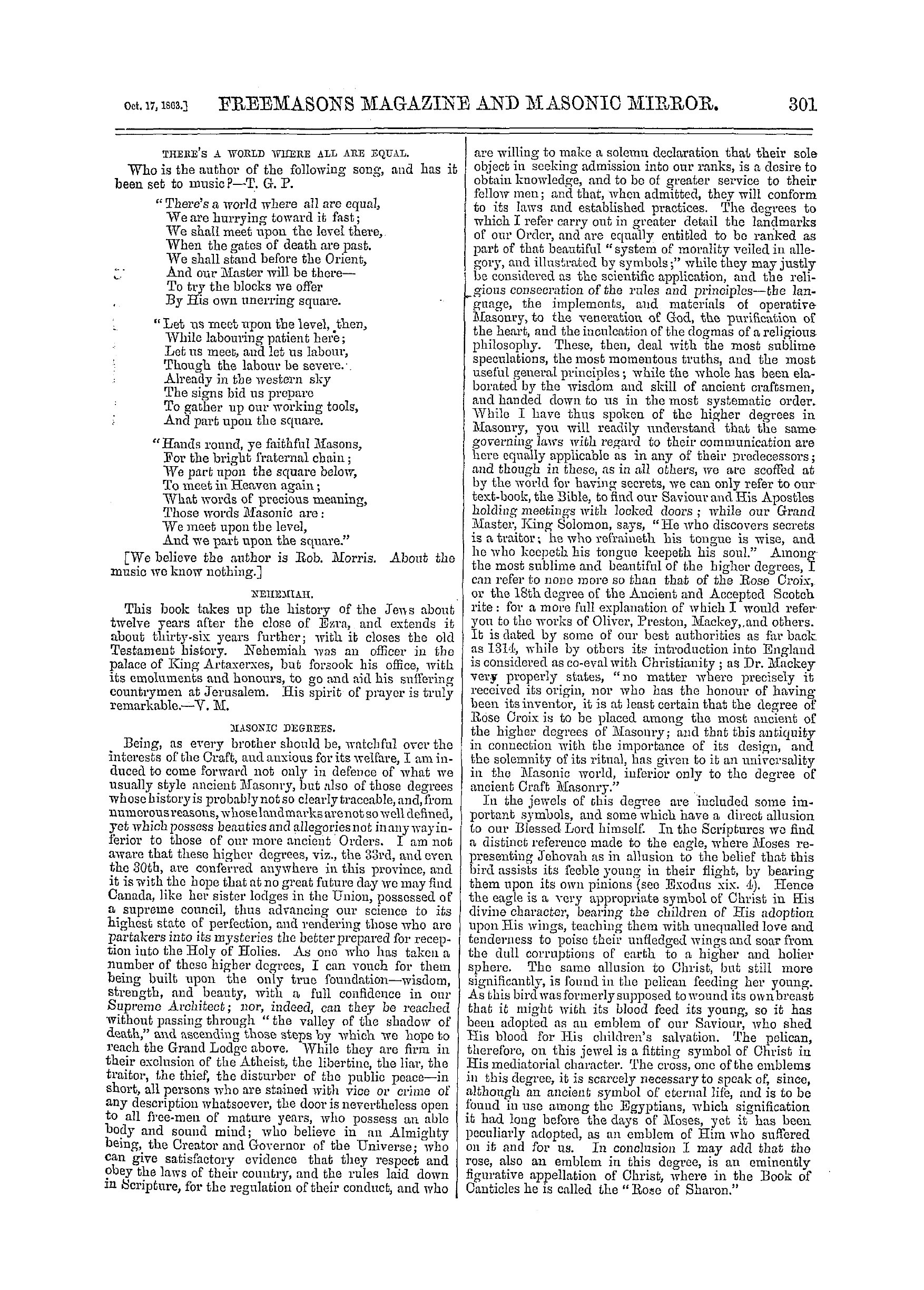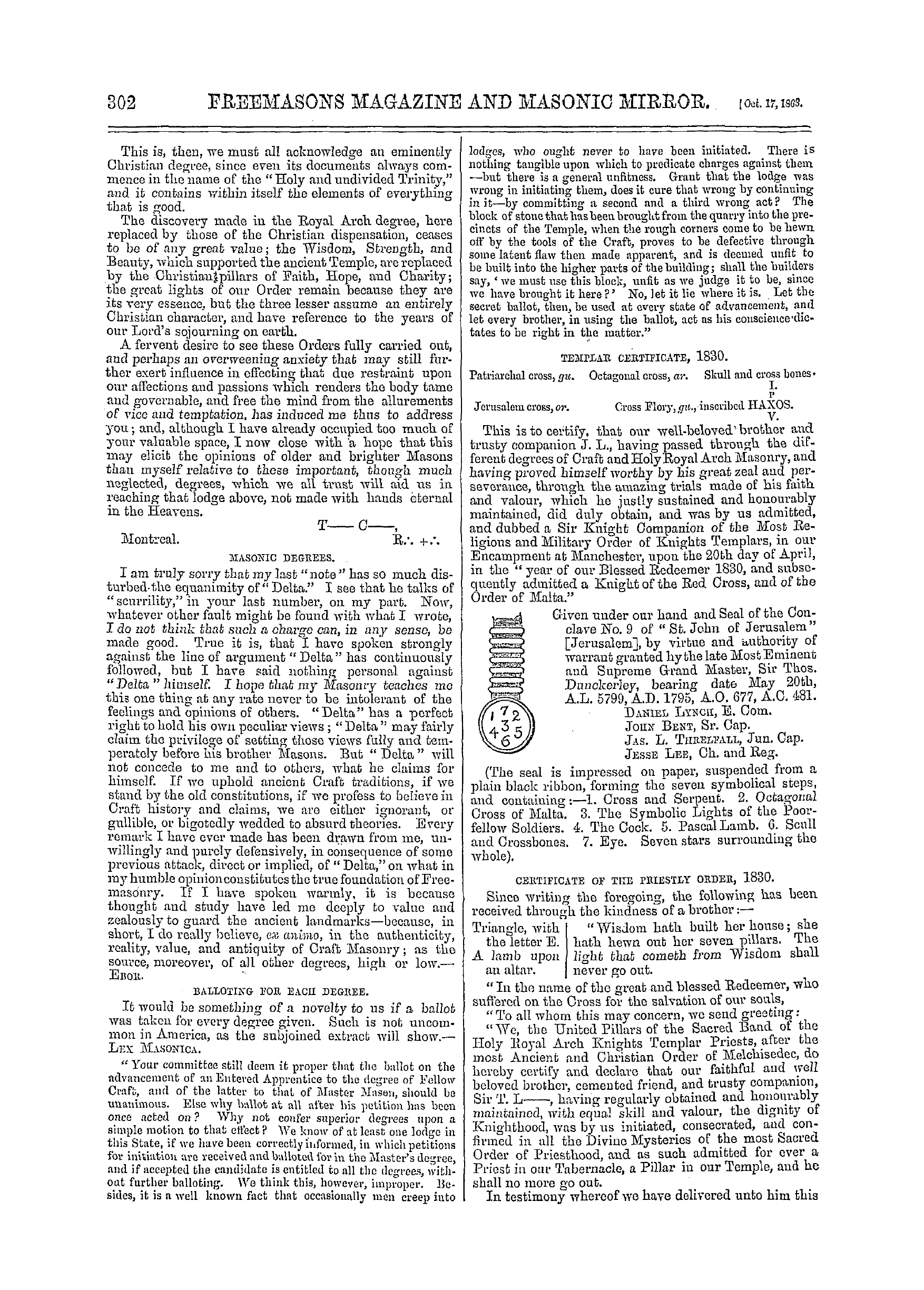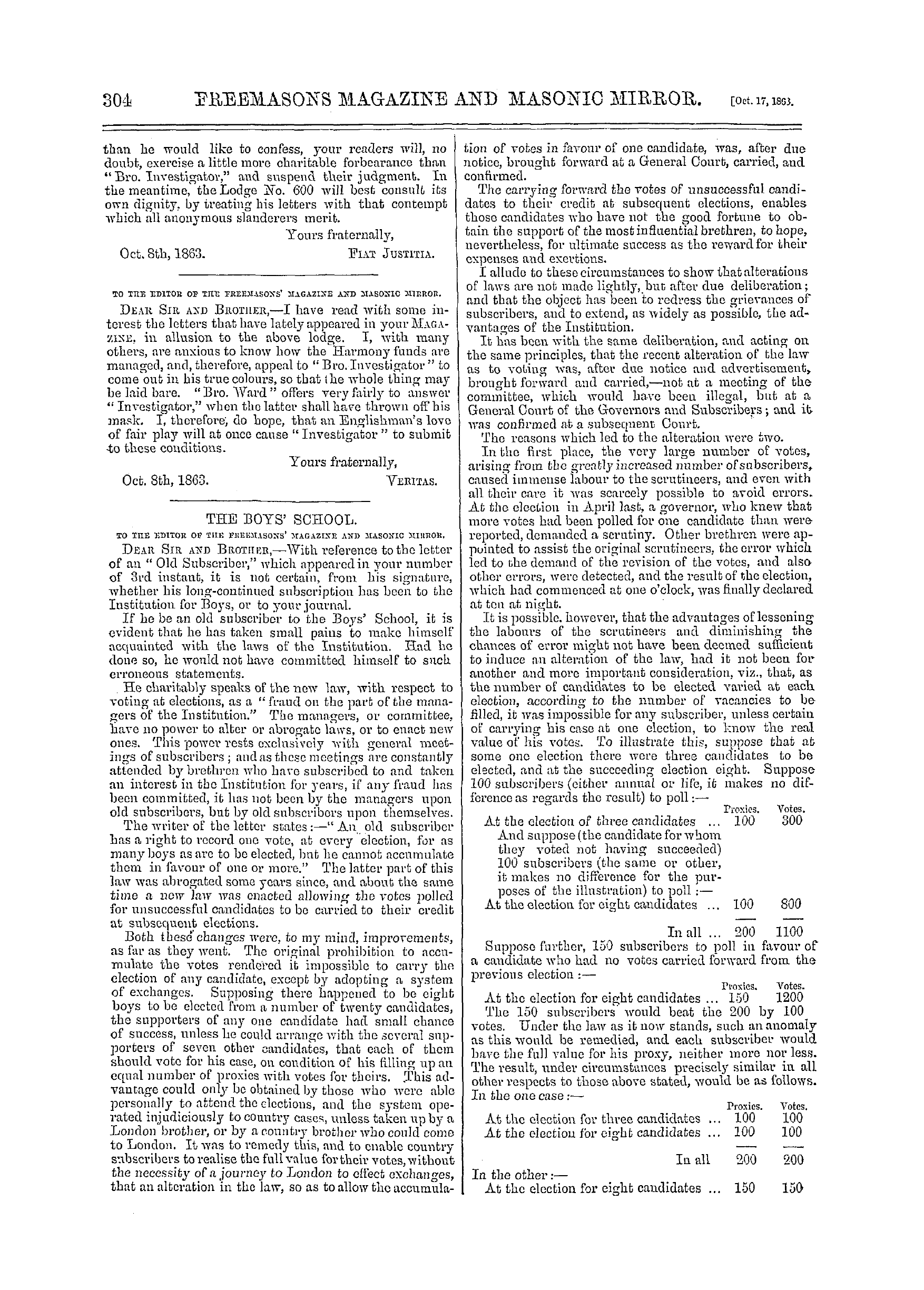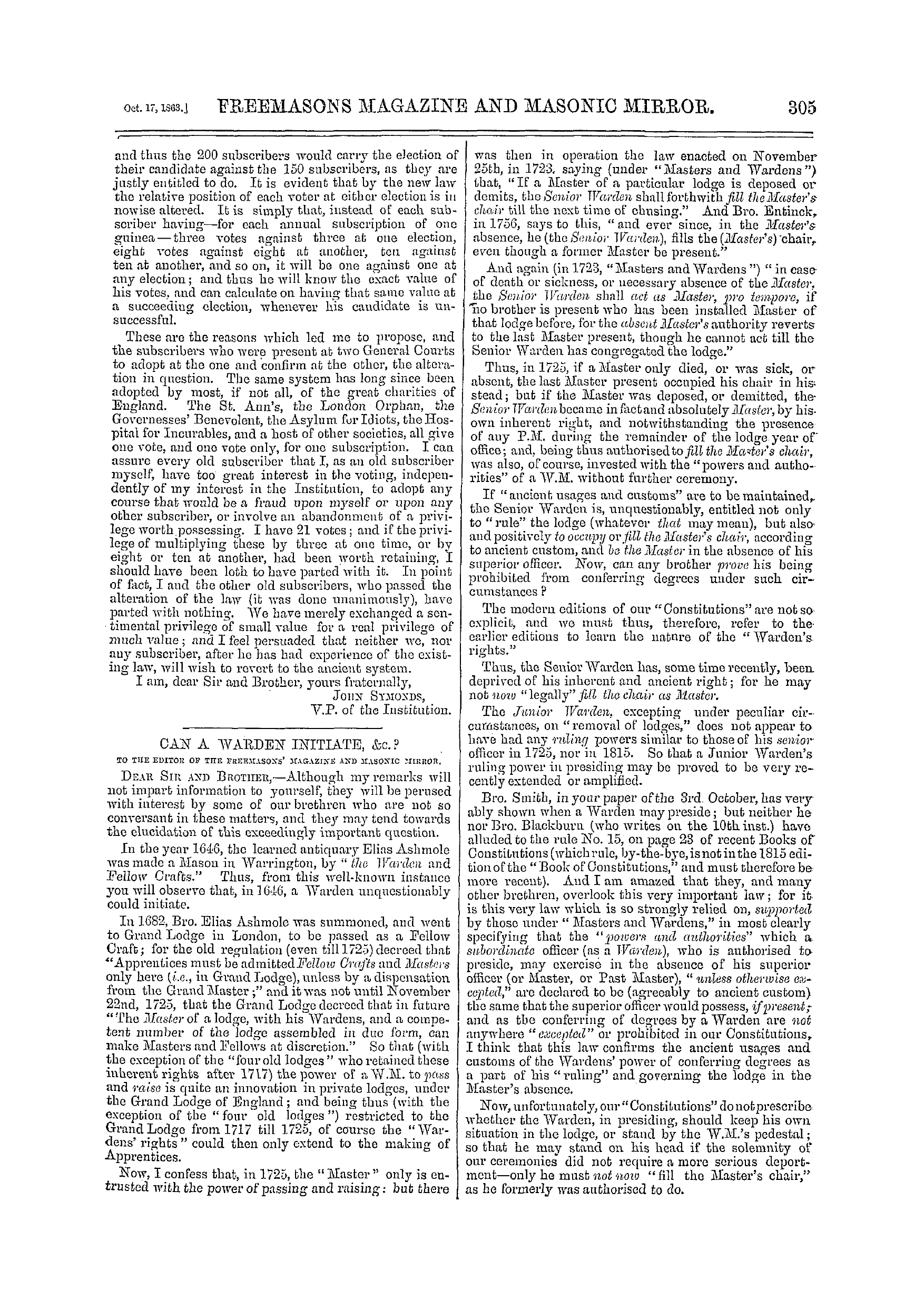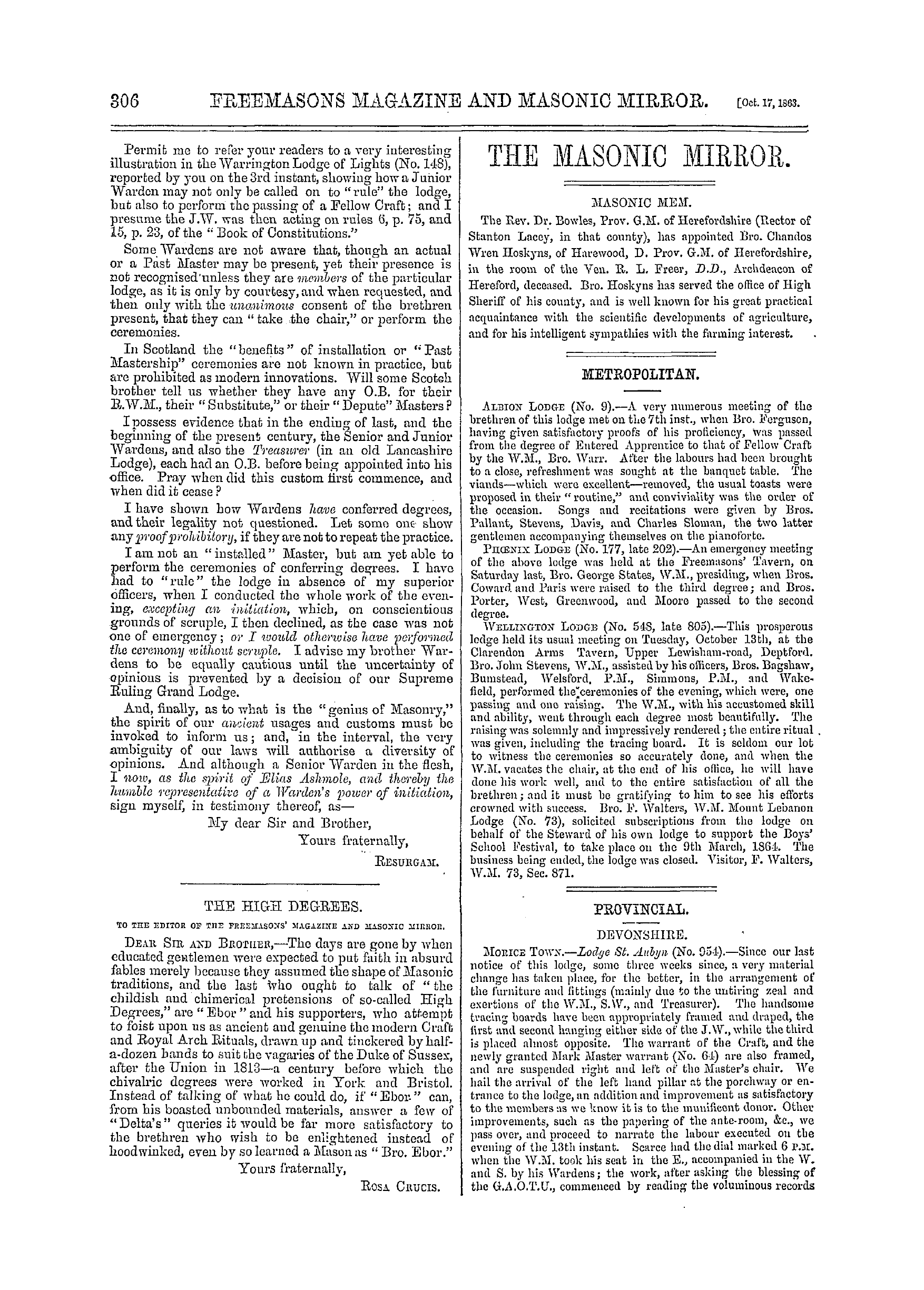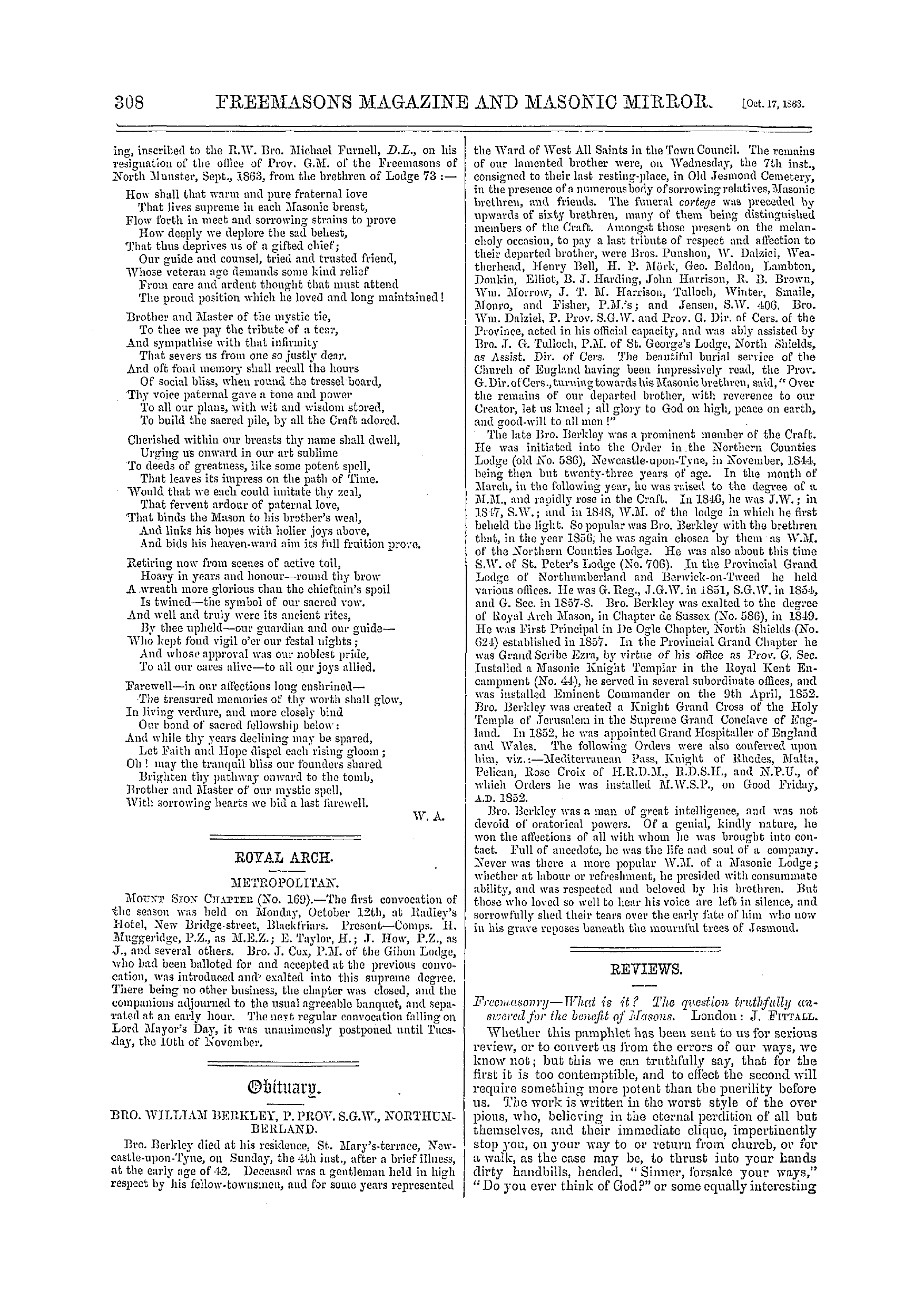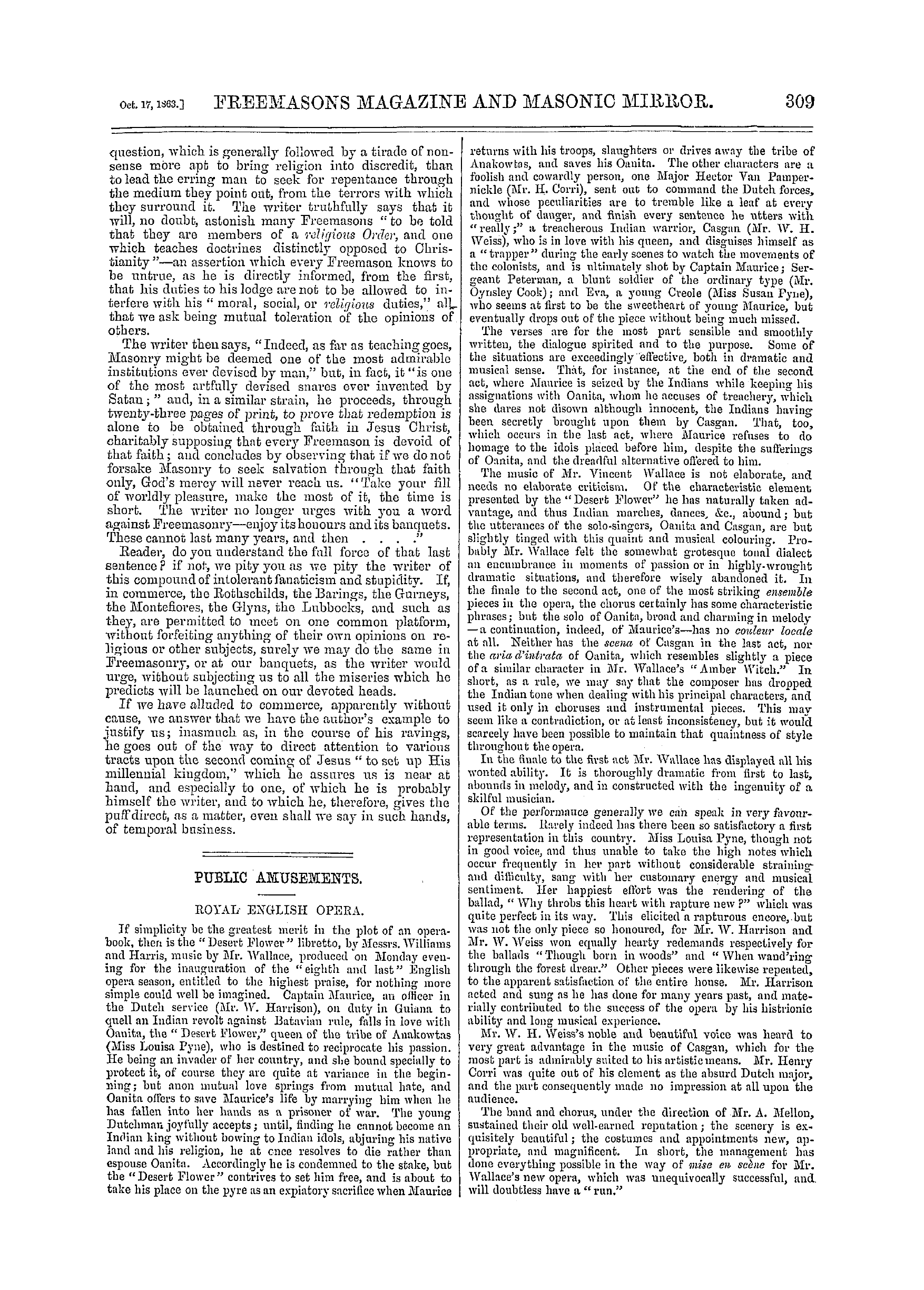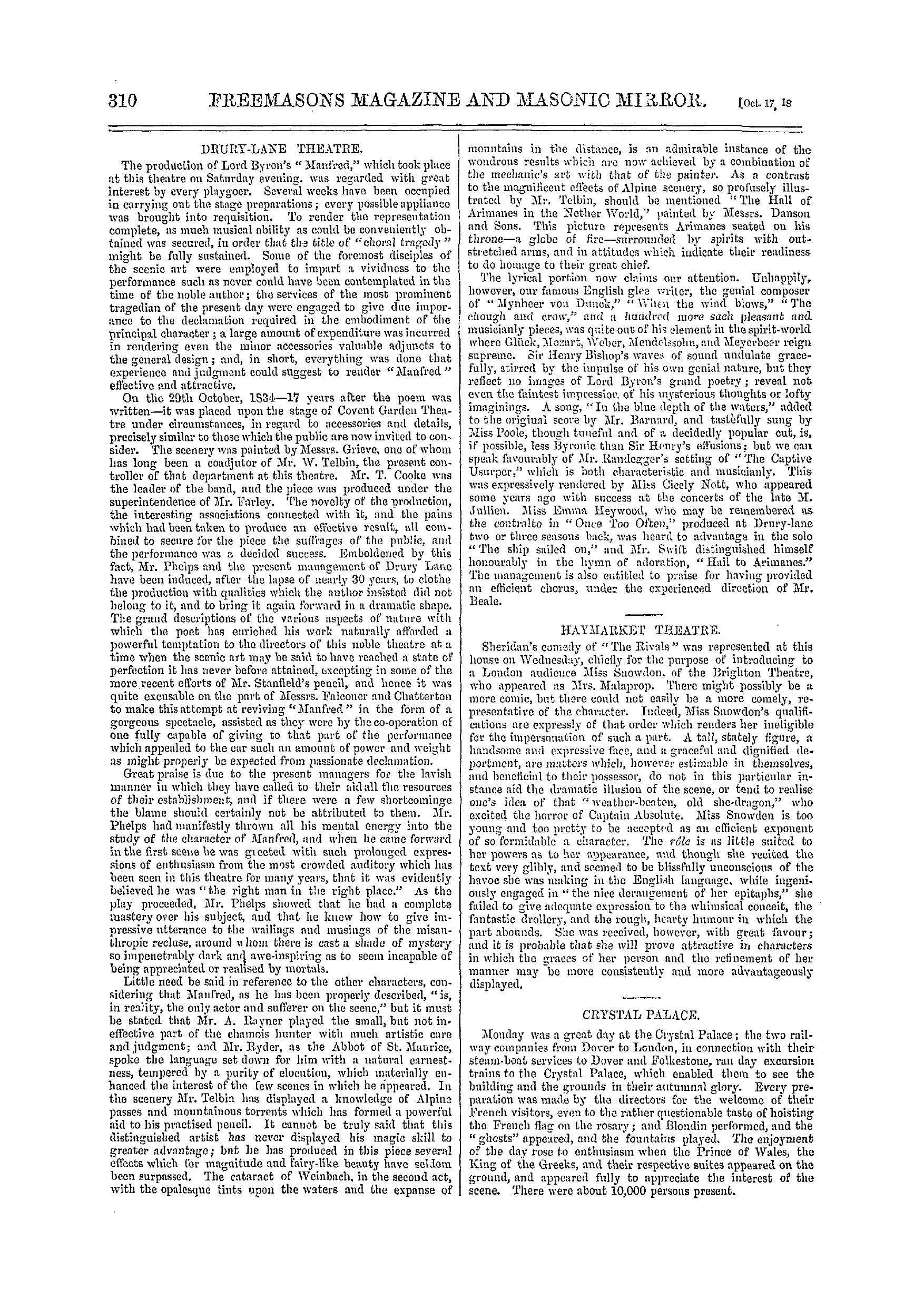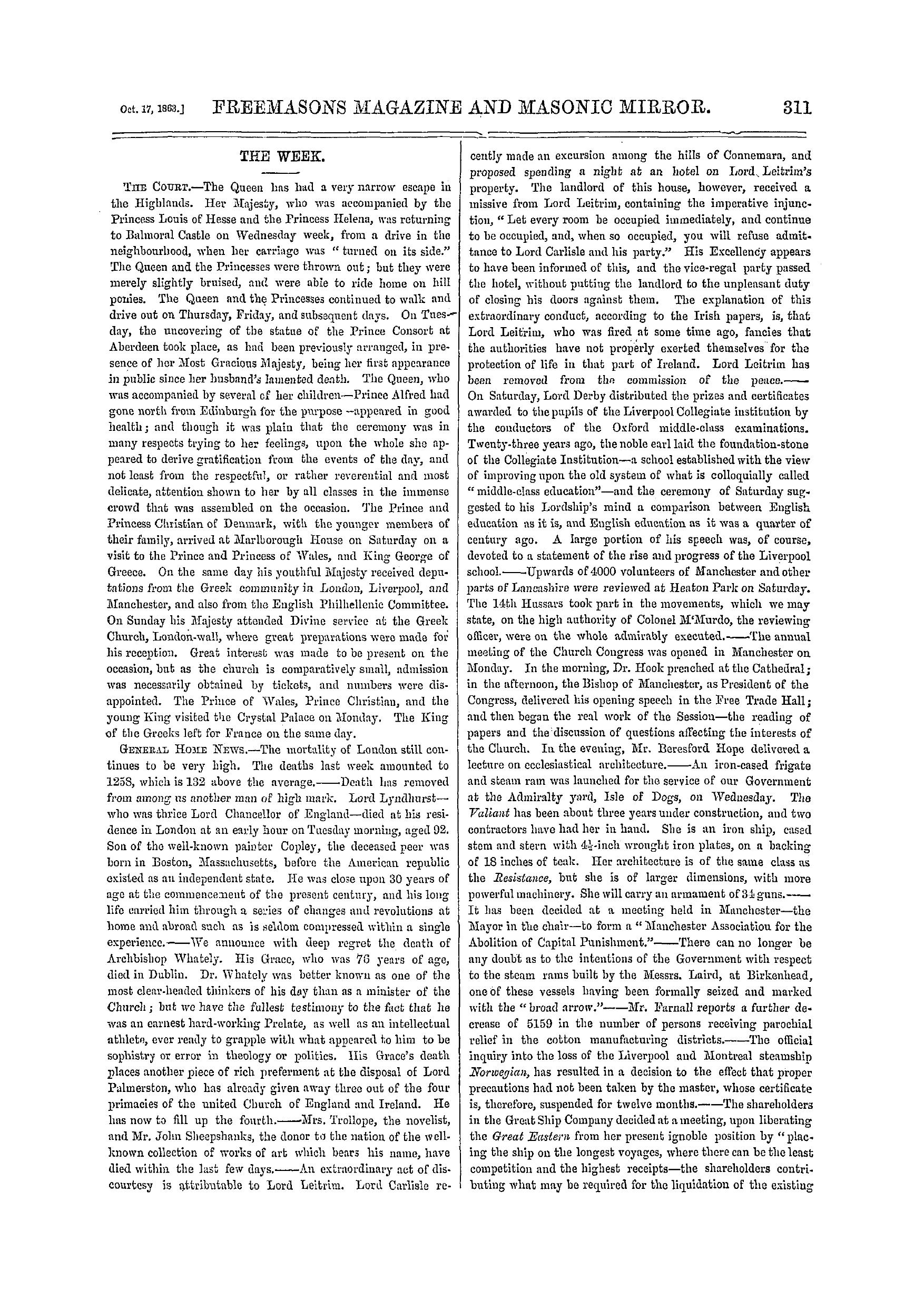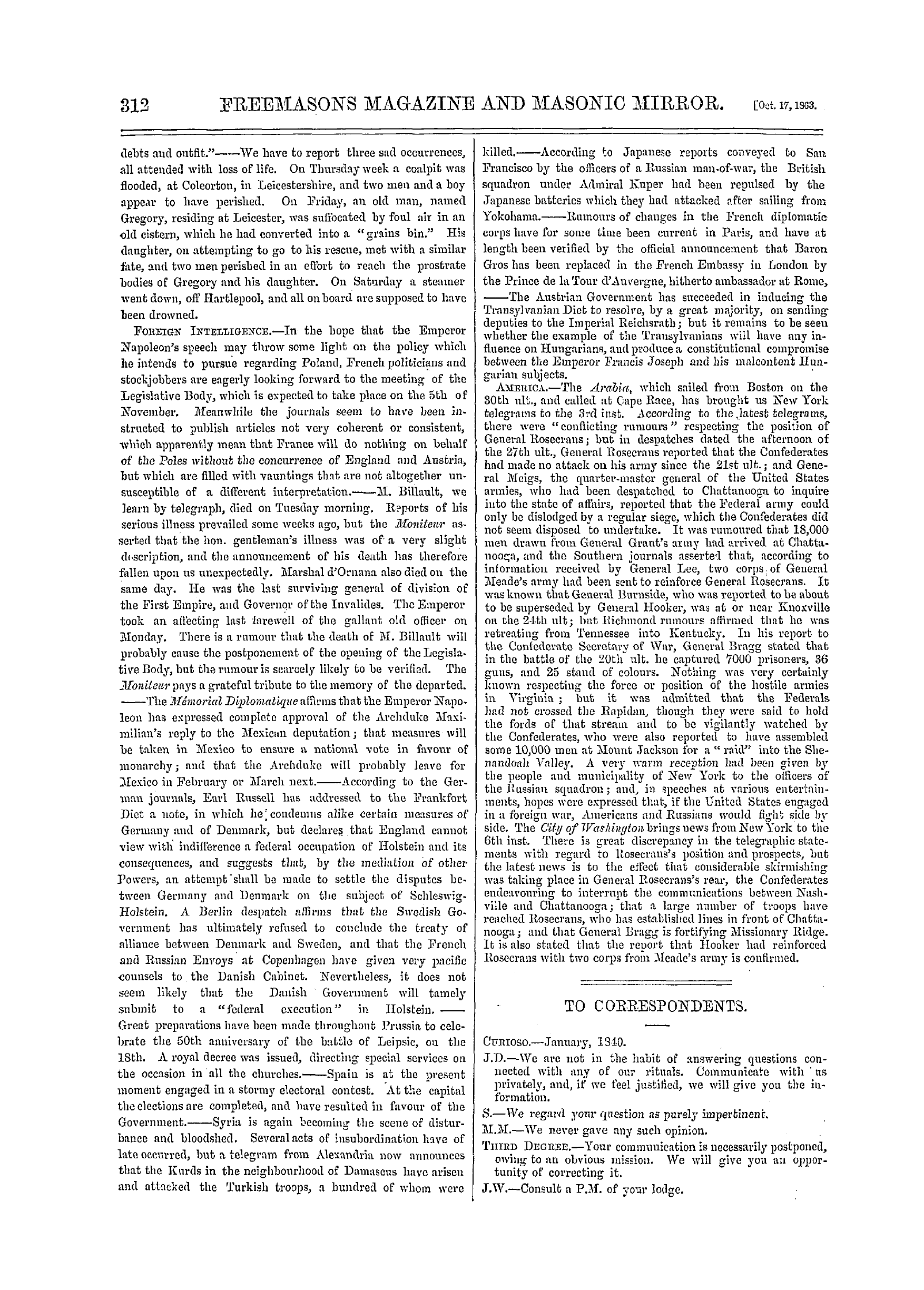Note: This text has been automatically extracted via Optical Character Recognition (OCR) software.
The Present Requirements Of Architecture In Order To A Successful Competition With Antiquity.*
attempt at rivalry . In the promotion of architecture , then , our views must be expanded in reference to the Church : the Church must not be left , as it is , in dwarfed proportions , but partake of the general progress . We ought no longer to allow the huge tavern to be looking down on the steeples of our churches . And we hesitate not to say—If our attainments in
, the art are to equal those of the ancients , if we are to resuscitate its bygone splendour , and bequeath to far-off" generations equal monuments of our times , magnificent cathedrals and churches must , as formerly , -furnish the leading encouragement . To this then "it behoves us to stir the ¦ leWe have the
suup peop . periority in wealth , in intelligence , in mechanical power , and in advantages generally , together with purer inducements ; why are we not , in this chief ¦ sp here , as iu others , aroused to surpass our less favoured predecessors .
2 . The next thing we have to allude to is , the fascination experienced by those who designed the structures of the middle ages . The extreme pleasure afforded to them is seen unquestionably in the effects . And on this it is unnecessary to dwell : for we doubt not that it will be felt again in a similar degree , if
the unlimited opportunities of indulging it return . The sphere itself has no bounds ; if the seven notes in music are found inexhaustible , the combinations in Gothic art must be as much so . Be it that a peculiar charm would accompany when all was new ; yet , notwithstandingif the means aud demands be presented
, , the gifted practitioner , finding no limit to his encouragement , will have the same fascination in design as formerly , and revel in a luxury that will never satiate . Those only who have a true taste for it know its untiring interest . As far as the pleasure in the work is essential in order to recover the success of
former times , all is assuring , provided that equal munificence can be called forth . 3 . We have in the third place to consider , that formerly the whole mind of the man of genius was , in a manner , concentrated unremittingly on his creations . We may imagine how some Peter Lightfoot , or
cloistered monk , would pursue uninterruptedly his avocation , as if he lived only to beautify his abbey church ; or the aesthetic brilliancy that would be brought to bear from some archbishop devoted to the Avork , as William de Melton , it may be , during the rise aud progress of the nave of York Minster . In this respect
past advantages are not to be recovered , for we cannot ask for such seclusion again ; but we submit the question , —Can we in our great works , upon the adoption of a more perfect practice and study , obtain its equivalent ? If less were undertaken in order that increased attention mi ght be given , possibly equal excellence in design might be attained to ; but the difficulty is in the compensation , which must be so regulated as to admit of the required application .
4 . This brings us , in the fourth place , to inquire more particularly into the system of practice in the ¦ olden time , which gave a circumscribed and a more fixed sphere of labour to the responsible architect . Upon this somewhat obscure subject we cannot enter without first brieflreferring to an institution which
y has its bearing on more than one point before us : we mean Preemasonry ; not in the form it has existed in since its revival at the beginning of the seventeenth century , but in its Mediaeval system .
Much secrecy and mystery attended it , which partly accounts for the obscurity in which history leaves U 3 as to architects and their operations . We know , however , that from a very early date there was an organised fraternity of Masons , who , from travelling and observation , as well as practice , gained
intelligence , and , by well-devised plans , communicated the benefit to their whole body as far as practicable ; the members constituting an order , partly religious , in some sort , and partly ' professional , with one object __ and interest in common . The importance which architecture then possessed as an art can scarcelbe
y overrated : for which reason the organisation was fostered by the clergy ; the rearing of religious structures was allowed to be monopolised by the Freemasons ; and it is a fact that ecclesiastics were frequently associated ; which circumstances render more intelligible tho zeal of the Masons , both in
accumulating , and in confining to themselves , the knowledge of their art . It is also evident , from the curious correspondence in the details of work , that the organisation was very complete ; and as it is to be inferred from the remains of structures of the later period of the Roman empirefrom a universal similaritof
, y arrangement , that there was a central control , the same principle may have been transferred from Roman usage . The silence of history leaves us very much to conjecture concerning the main agents in the erection ot our ancient edifices . The rearing of them , as a tradewould be in the hands of the Freemasons
, ( that name implying Avorkers in freestone , or freestone masons ) , and much would depend on the wardens , who were the foremen of parties of ten of them , and upon the masters ; but in a great
undertaking some presiding man of genius , whose skill alone qualified him , must have had the chief control . Priests possessing a taste for it were not only associated in Freemasonry , but readily initiated ; and from that class sometimes would arise the preeminent architect . Architectural ability , indeed , to have worked
seems its way to this position by association with , or development amongst , the Freemasons . With the mysteries and emblems that have come down through this channel , even from the Egyptians and Grecians , our inquiry has no concern ; but it is material to note that the secrets of the Masonic art
, whilst confined to themselves , were disseminated unreservedly amongst that body . Selfish ambition and jealousy would thereby be obviated : every man of taste could enter the association ; and thereupon his suggestions became the common stock of the fraternitavailable to the architectwho would
y , , be associated with them in his labours . In proceeding to consider the limited sphere of the chief architect , we have to note how originality in design was prized as a principal item of merit . For in contemplating the extraordinary productions of the Middle Ages in the better period , one is struck with the variety and the
prolific inventions . How diverse is York Cathedral from Lincoln , for example : how unlike are they both to Ely ; and so on to Salisbury , Wells , and almost all others . Now this indicates as many chief architects as varieties , and the sphere of labour accordingllimitedIt would be an
y . historical problem to find the same architect to have been the designer of many cathedrals : rather was he engaged only for what he could entirely devote himself to . And , unless similar advantages can be
Note: This text has been automatically extracted via Optical Character Recognition (OCR) software.
The Present Requirements Of Architecture In Order To A Successful Competition With Antiquity.*
attempt at rivalry . In the promotion of architecture , then , our views must be expanded in reference to the Church : the Church must not be left , as it is , in dwarfed proportions , but partake of the general progress . We ought no longer to allow the huge tavern to be looking down on the steeples of our churches . And we hesitate not to say—If our attainments in
, the art are to equal those of the ancients , if we are to resuscitate its bygone splendour , and bequeath to far-off" generations equal monuments of our times , magnificent cathedrals and churches must , as formerly , -furnish the leading encouragement . To this then "it behoves us to stir the ¦ leWe have the
suup peop . periority in wealth , in intelligence , in mechanical power , and in advantages generally , together with purer inducements ; why are we not , in this chief ¦ sp here , as iu others , aroused to surpass our less favoured predecessors .
2 . The next thing we have to allude to is , the fascination experienced by those who designed the structures of the middle ages . The extreme pleasure afforded to them is seen unquestionably in the effects . And on this it is unnecessary to dwell : for we doubt not that it will be felt again in a similar degree , if
the unlimited opportunities of indulging it return . The sphere itself has no bounds ; if the seven notes in music are found inexhaustible , the combinations in Gothic art must be as much so . Be it that a peculiar charm would accompany when all was new ; yet , notwithstandingif the means aud demands be presented
, , the gifted practitioner , finding no limit to his encouragement , will have the same fascination in design as formerly , and revel in a luxury that will never satiate . Those only who have a true taste for it know its untiring interest . As far as the pleasure in the work is essential in order to recover the success of
former times , all is assuring , provided that equal munificence can be called forth . 3 . We have in the third place to consider , that formerly the whole mind of the man of genius was , in a manner , concentrated unremittingly on his creations . We may imagine how some Peter Lightfoot , or
cloistered monk , would pursue uninterruptedly his avocation , as if he lived only to beautify his abbey church ; or the aesthetic brilliancy that would be brought to bear from some archbishop devoted to the Avork , as William de Melton , it may be , during the rise aud progress of the nave of York Minster . In this respect
past advantages are not to be recovered , for we cannot ask for such seclusion again ; but we submit the question , —Can we in our great works , upon the adoption of a more perfect practice and study , obtain its equivalent ? If less were undertaken in order that increased attention mi ght be given , possibly equal excellence in design might be attained to ; but the difficulty is in the compensation , which must be so regulated as to admit of the required application .
4 . This brings us , in the fourth place , to inquire more particularly into the system of practice in the ¦ olden time , which gave a circumscribed and a more fixed sphere of labour to the responsible architect . Upon this somewhat obscure subject we cannot enter without first brieflreferring to an institution which
y has its bearing on more than one point before us : we mean Preemasonry ; not in the form it has existed in since its revival at the beginning of the seventeenth century , but in its Mediaeval system .
Much secrecy and mystery attended it , which partly accounts for the obscurity in which history leaves U 3 as to architects and their operations . We know , however , that from a very early date there was an organised fraternity of Masons , who , from travelling and observation , as well as practice , gained
intelligence , and , by well-devised plans , communicated the benefit to their whole body as far as practicable ; the members constituting an order , partly religious , in some sort , and partly ' professional , with one object __ and interest in common . The importance which architecture then possessed as an art can scarcelbe
y overrated : for which reason the organisation was fostered by the clergy ; the rearing of religious structures was allowed to be monopolised by the Freemasons ; and it is a fact that ecclesiastics were frequently associated ; which circumstances render more intelligible tho zeal of the Masons , both in
accumulating , and in confining to themselves , the knowledge of their art . It is also evident , from the curious correspondence in the details of work , that the organisation was very complete ; and as it is to be inferred from the remains of structures of the later period of the Roman empirefrom a universal similaritof
, y arrangement , that there was a central control , the same principle may have been transferred from Roman usage . The silence of history leaves us very much to conjecture concerning the main agents in the erection ot our ancient edifices . The rearing of them , as a tradewould be in the hands of the Freemasons
, ( that name implying Avorkers in freestone , or freestone masons ) , and much would depend on the wardens , who were the foremen of parties of ten of them , and upon the masters ; but in a great
undertaking some presiding man of genius , whose skill alone qualified him , must have had the chief control . Priests possessing a taste for it were not only associated in Freemasonry , but readily initiated ; and from that class sometimes would arise the preeminent architect . Architectural ability , indeed , to have worked
seems its way to this position by association with , or development amongst , the Freemasons . With the mysteries and emblems that have come down through this channel , even from the Egyptians and Grecians , our inquiry has no concern ; but it is material to note that the secrets of the Masonic art
, whilst confined to themselves , were disseminated unreservedly amongst that body . Selfish ambition and jealousy would thereby be obviated : every man of taste could enter the association ; and thereupon his suggestions became the common stock of the fraternitavailable to the architectwho would
y , , be associated with them in his labours . In proceeding to consider the limited sphere of the chief architect , we have to note how originality in design was prized as a principal item of merit . For in contemplating the extraordinary productions of the Middle Ages in the better period , one is struck with the variety and the
prolific inventions . How diverse is York Cathedral from Lincoln , for example : how unlike are they both to Ely ; and so on to Salisbury , Wells , and almost all others . Now this indicates as many chief architects as varieties , and the sphere of labour accordingllimitedIt would be an
y . historical problem to find the same architect to have been the designer of many cathedrals : rather was he engaged only for what he could entirely devote himself to . And , unless similar advantages can be
